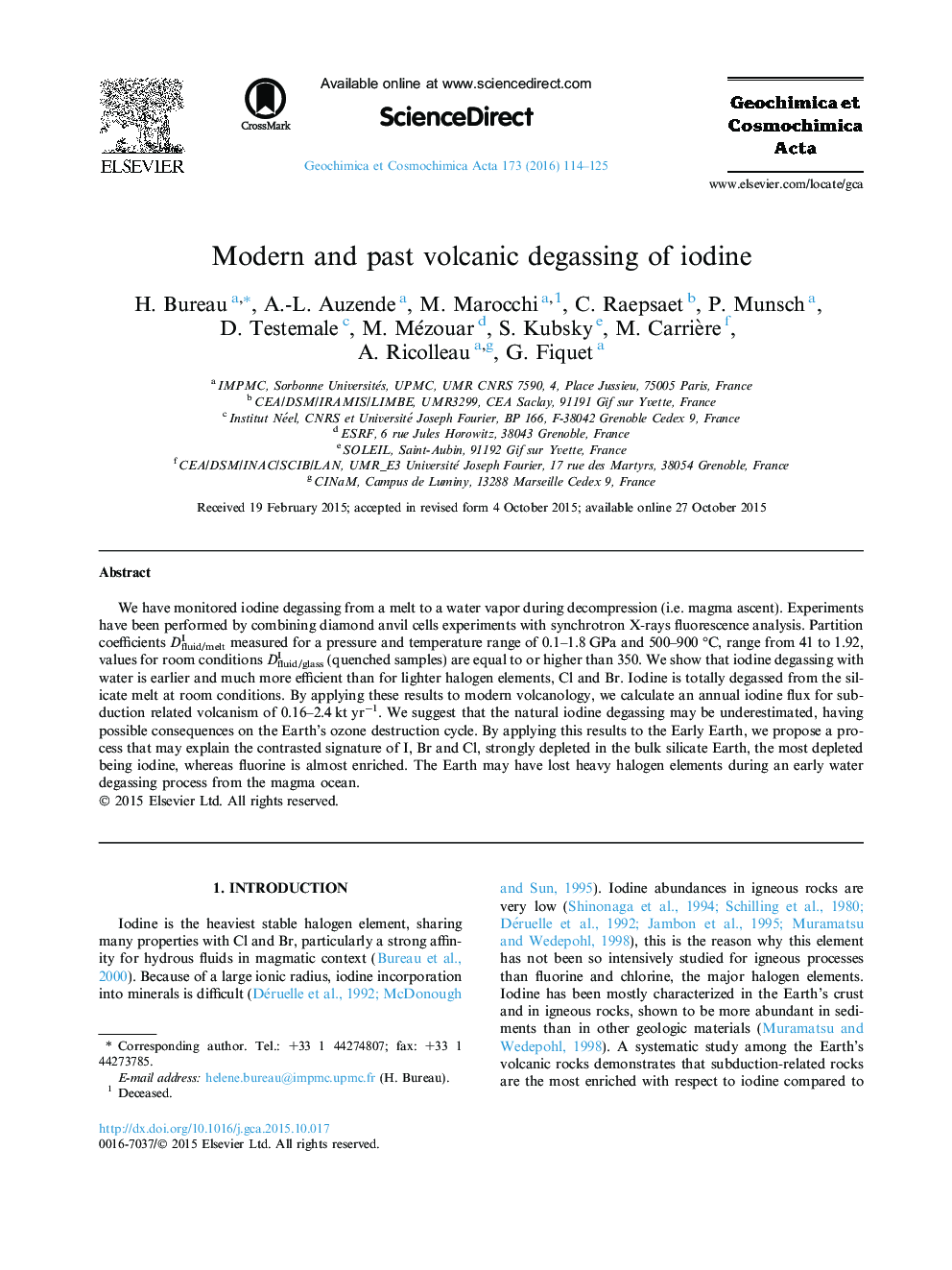| Article ID | Journal | Published Year | Pages | File Type |
|---|---|---|---|---|
| 6437555 | Geochimica et Cosmochimica Acta | 2016 | 12 Pages |
We have monitored iodine degassing from a melt to a water vapor during decompression (i.e. magma ascent). Experiments have been performed by combining diamond anvil cells experiments with synchrotron X-rays fluorescence analysis. Partition coefficients DIfluid/melt measured for a pressure and temperature range of 0.1-1.8 GPa and 500-900 °C, range from 41 to 1.92, values for room conditions DIfluid/glass (quenched samples) are equal to or higher than 350. We show that iodine degassing with water is earlier and much more efficient than for lighter halogen elements, Cl and Br. Iodine is totally degassed from the silicate melt at room conditions. By applying these results to modern volcanology, we calculate an annual iodine flux for subduction related volcanism of 0.16-2.4 kt yrâ1. We suggest that the natural iodine degassing may be underestimated, having possible consequences on the Earth's ozone destruction cycle. By applying this results to the Early Earth, we propose a process that may explain the contrasted signature of I, Br and Cl, strongly depleted in the bulk silicate Earth, the most depleted being iodine, whereas fluorine is almost enriched. The Earth may have lost heavy halogen elements during an early water degassing process from the magma ocean.
